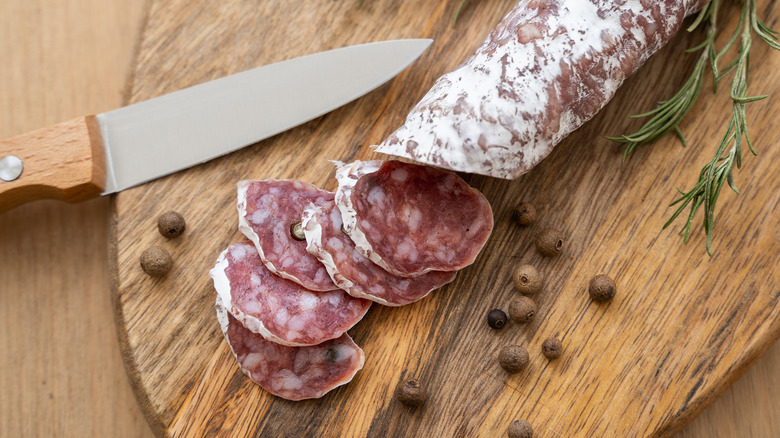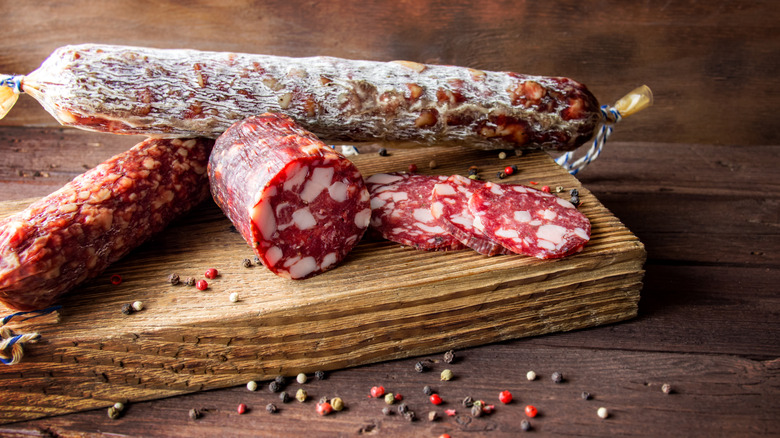How To Spot The Safe-To-Eat Mold On Your Platter Of Cured Meat
From aged cheese to fermented koji to wine, the world of mold (believe it or not) can be a delicious one. Even so, it's natural for foodies to have a few questions as they navigate this perhaps unfamiliar territory. What happens if you accidentally eat mold? Do you have to cut off the moldy parts of certain foods? And can you?
Contrary to popular belief, "good" molds act as natural preservatives, keeping your cured meats for longer with their flavors intact. In the case of artisanal cured meats, chances are that a smattering of white mold is actually helping the food rather than hurting it. Visible white mold spores are a mark of high-quality salami, ham, and sausages. That white, fuzzy Penicillium nalgiovense slows drying over time and preserves aroma. The same mold (at least, the "same" appearance-wise) that spells trouble for tomatoes or bread is safe when it's growing on cured meats.
To be clear, we aren't talking about fresh or deli meat here. Eating gray fur on the surface of some bologna at the back of your fridge, for instance, is not the move. If you spot mold on either of these, they've reached advanced decomposition and must be thrown out. Also, while a little white mold on cured meat is fine and dandy, if you spot green, blue, or black-looking mold on the surface of your cured meat, that's no bueno, and the meat will need to be tossed out to be safe.
If the mold is white, then it's quite alright
In the case of dry-cured meats, it's perfectly normal for a shelf-stable product like this to develop non-dangerous white surface mold over time, and it can be scrubbed or cut off. If you don't dig the way it looks and don't want to eat it, you can remove the mold by cutting around and below the visible spores. However, don't feel like you have to because it's perfectly fine to eat and doesn't necessarily have to be removed at all. Thanks to their low water content, cured meats aren't especially prone to mold growth to begin with, and even if some mold does begin to grow on the meat's surface, harder, denser foods aren't easily penetrated by the fungi's thread-like structures. For optimal longevity, store your cured meats in the fridge away from high moisture foods like fruits and vegetables.
There are as many as 300,000 or more different types of mold in the world, and mold on food can be healthy or toxic. The punchy, crave-able flavors of blue-veined cheeses like Roquefort and Stilton are produced by introducing Penicillium roqueforti spores, and even antibiotics and probiotics come from fungal mold strains. A white spore or two on your soppressata is nothing to fear — in fact, rejoice. Chances are that you have a charcuterie board on its way, which means a fun dinner party or lovely solo night, and high-quality snacks to fuel it.

